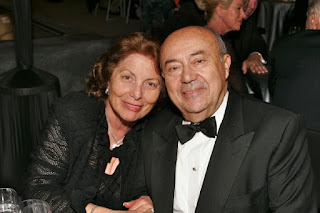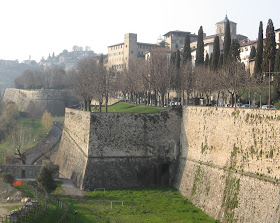The amazing life of 'the father of the mobile telephone'
.jpg) |
| Even at the age of 88, Viterbi remains actively involved in the scientific community |
The Viterbi algorithm is still used widely in cellular phones and other communication devices for error correcting codes as well as for speech recognition, DNA analysis and other applications. Viterbi also helped to develop the Code Division Multiple Access standard for cell phone networks.
He is recognised in Italy as ‘il padre del telefonino’ - the father of the mobile telephone.
Viterbi’s father, Achille, was director of Bergamo Hospital’s ophthalmology department, and his mother, Maria Luria, came from a prominent family in Piedmont and had a teaching degree. But after Mussolini introduced his new racial laws in Italy before the start of World War II, the couple, who were both Jewish, were deprived of their position and could no longer make a living to support their family.
They had planned to sail to the United States on 1 September, 1939, but after receiving a tip-off alerting them to possible danger, they secretly escaped two weeks early and were able to land safely in New York, where a member of their extended family already lived. They then moved to Boston, where Andrea’s name was anglicised as Andrew after he was naturalised as an American.
 |
| Andrew Viterbi pictured in 2005 with his late wife, Erna, who assisted him in his philanthropic causes |
He was awarded academic positions at the University of California and, in 1967, he proposed the Viterbi algorithm to decode convolutionally encoded data, a ground breaking mathematical formula for eliminating signal interference. This allowed for effective cellular communication, digital satellite broadcast receivers, and deep space telemetry.
With Irwin Jacobs, Viterbi was the co-founder of Linkabit Corporation in 1968, and Qualcomm Inc in 1985, which became one of the most important communications companies worldwide. He became president of the venture capital company, The Viterbi Group in 2003, which invests in emerging businesses that are pioneering innovative technologies in the area of wireless communications.
Viterbi has received many awards for his invention of the Viterbi algorithm and a computer centre and an engineering school have been named after him. His algorithm paved the way for the widespread use of cellular technology, which changed the way people communicate worldwide.
In 2003 he was awarded an honorary degree in computer science by La Sapienza University of Rome and in 2007 an honorary degree in electrical engineering by the University in his native city of Bergamo. He has written two internationally respected books about digital communications and coding.
Viterbi in 1958 married Erna Finci, a Jewish refugee who had arrived in the United States from Sarajevo in the former Yugoslavia. Her family had been deported from an Italian occupied zone in Sarajevo to Parma in Italy, where they were interned. They were saved from being sent to an extermination camp by the residents of Gramignazzo di Sissa, the village when they were interned, and were looked after by a local family when the Germans advanced into Italy, who hid them in their vineyard. Other Italians helped them to walk across the Alps into Switzerland, where they stayed until after the war.
The couple had three children. Erna, who helped organise Viterbi’s multiple acts of philanthropy, died in 2015. Their charitable donations included $52 million to the University of Southern California, where the engineering school was renamed the Andrew and Erna Viterbi School of Engineering.
 |
| Bergamo's Città Alta is protected by an imposing wall built by the Venetians |
Bergamo in Lombardy is a beautiful city with an upper and lower town that are separated by impressive fortifications. The magical upper town - the Città Alta - has gems of mediaeval and Renaissance architecture surrounded by the impressive 16th century walls, which were built by the Venetians who ruled at the time. Outside the walls, the elegant Città Bassa, which grew up on the plain below, has some buildings that date back to the 15th century as well as imposing architecture added in the 19th and 20th centuries. While the Città Alta is the draw for many tourists, the lower town also has art galleries, churches and theatres and a wealth of good restaurants and smart shops to enjoy.
_-_facciata_1_2019-06-23.jpg) |
| The Rocca dei Terzi with its 89ft central tower |
Gramignazzo, the village near Parma where Viterbi’s future wife, Erna, was saved with her family from being shipped to a Nazi extermination camp, is a frazione of the municipality of Sissa, in farming country on the south bank of the Po river in Emilia Romagna. Sissa has a restored castle, the Rocca dei Terzi, which dates back to the 11th century and is notable for a 27-metre (89ft) tower added in the 16th century. The village is host every November to a festival known as the Sapori del Maiale, celebrating products made from pork, including many varieties of sausage and salami as well as roast pork dishes such as porchetta, typically made of rolled loin or belly pork stuffed with herbs.
Also on this day:
1454: The death of explorer Amerigo Vespucci
1809: The birth of statesman and winemaker Bettino Ricasoli
1842: The premiere of Giuseppe Verdi’s Nabucco
1908: The founding of football club Internazionale
1948: The birth of politician Emma Bonino
No comments:
Post a Comment